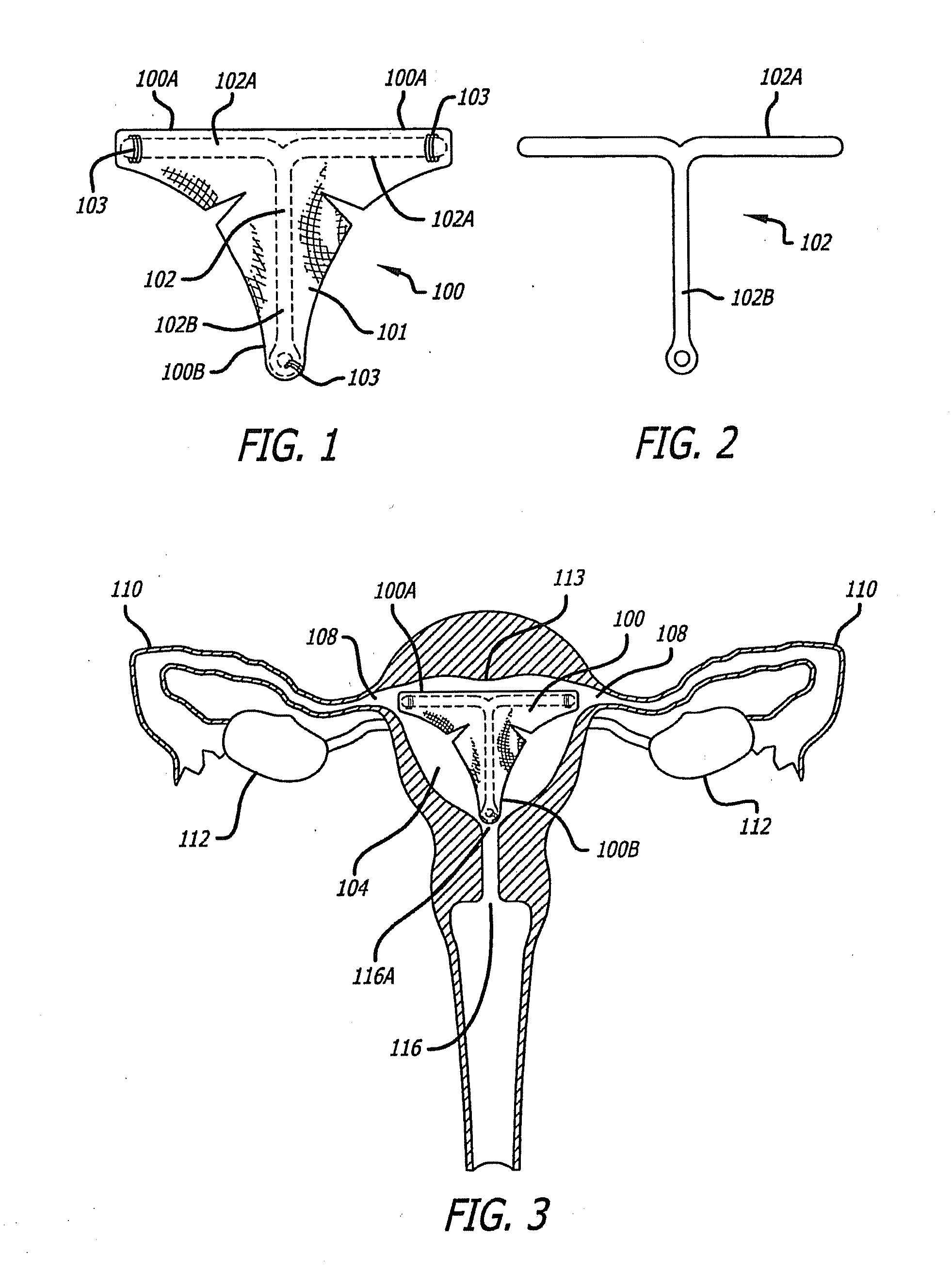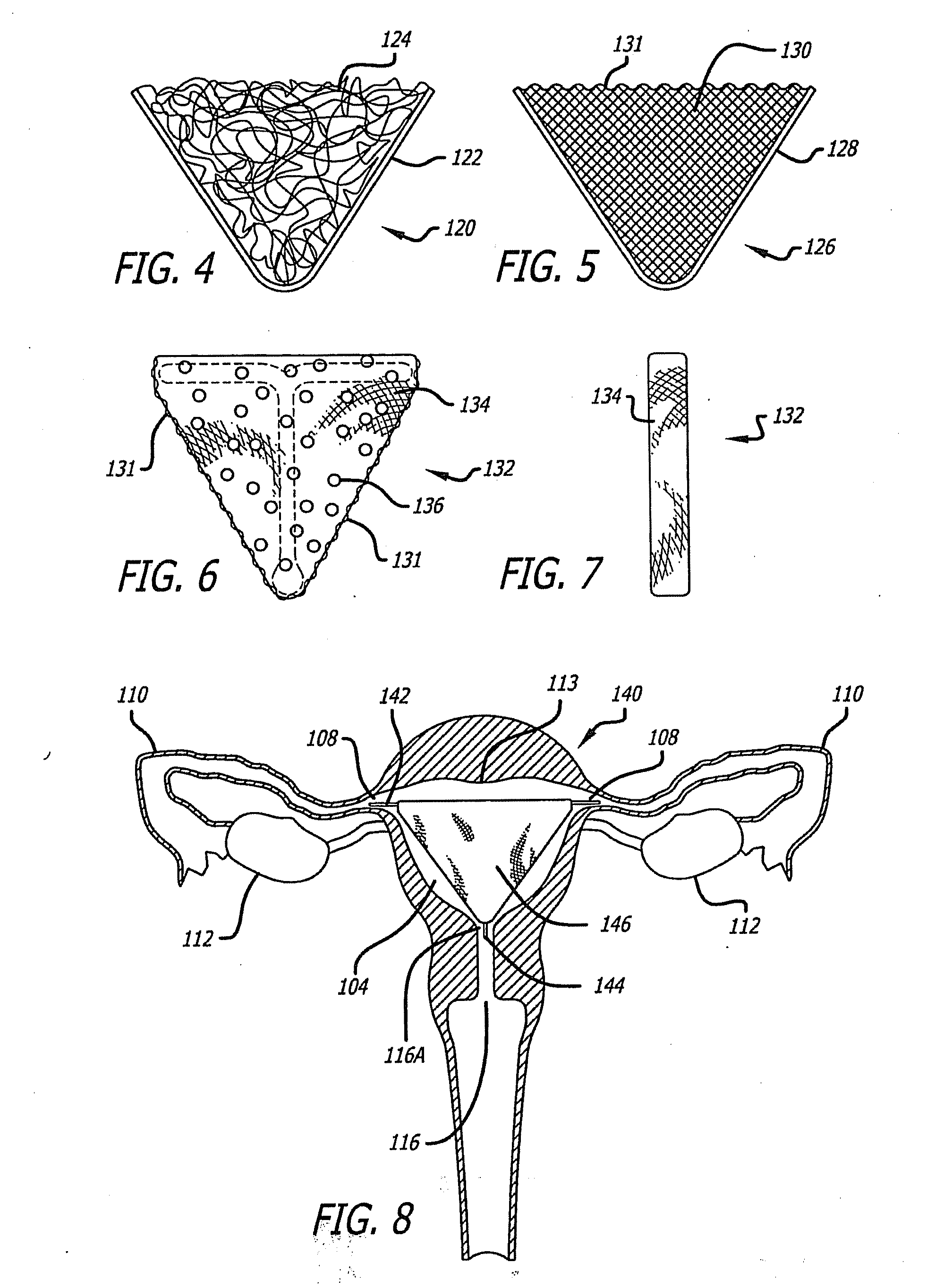Method and apparatus for creating intrauterine adhesions
a technology of intrauterine adhesion and creating method, which is applied in the direction of surgical staples, blood vessels, prostheses, etc., can solve the problems of excessive bleeding, substantial discomfort, and disruption of personal/family life, and achieve the effect of promoting tissue growth, effective adhesion formation, and improving treatment
- Summary
- Abstract
- Description
- Claims
- Application Information
AI Technical Summary
Benefits of technology
Problems solved by technology
Method used
Image
Examples
Embodiment Construction
Mechanisms of Action
[0068]Excessive menstrual flow or bleeding, termed menorrhagia, is indicative of abnormal sloughing of the endometrial tissue layer. Unlike conventional therapies such as hysterectomy or ablation / resection procedures, the embodiments of the present invention achieve reduced bleeding with the intended outcome of reduced bleeding or amenorrhea (cessation of bleeding) by way of an implant, which decreases or deactivates the endometrial tissue. There may be several contributing mechanisms or steps of action to create amenorrhea or reduced bleeding in a patient. Many of these mechanisms may or may not relate to the creation of adhesions, as non-adhesion based mechanisms of action may also achieve clinical amenorrhea to eliminate abnormal uterine bleeding.
[0069]One such mechanism, previously discussed in U.S. Pat. 6,708,056, involves the complete obliteration of the uterine cavity. Specifically, this involves replacement of the uterine endometrium and the adjacent virt...
PUM
 Login to View More
Login to View More Abstract
Description
Claims
Application Information
 Login to View More
Login to View More - R&D
- Intellectual Property
- Life Sciences
- Materials
- Tech Scout
- Unparalleled Data Quality
- Higher Quality Content
- 60% Fewer Hallucinations
Browse by: Latest US Patents, China's latest patents, Technical Efficacy Thesaurus, Application Domain, Technology Topic, Popular Technical Reports.
© 2025 PatSnap. All rights reserved.Legal|Privacy policy|Modern Slavery Act Transparency Statement|Sitemap|About US| Contact US: help@patsnap.com



